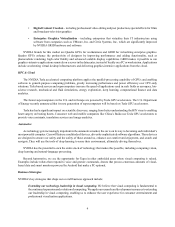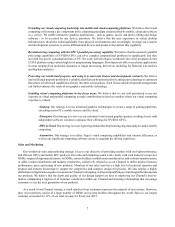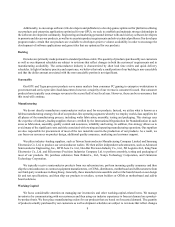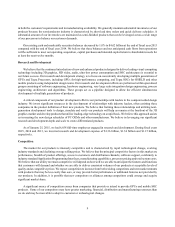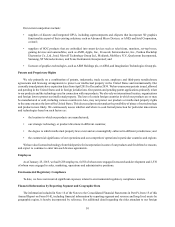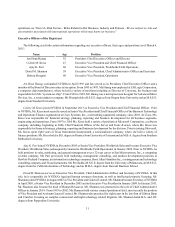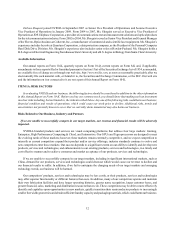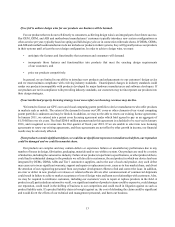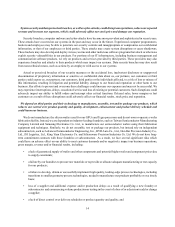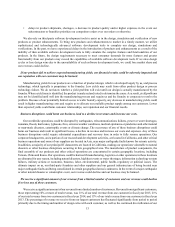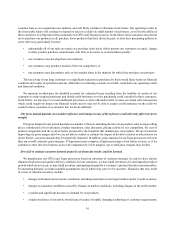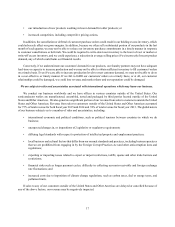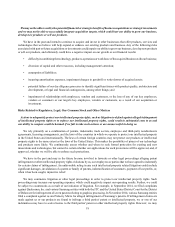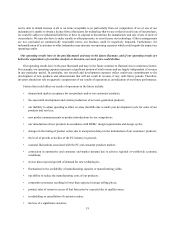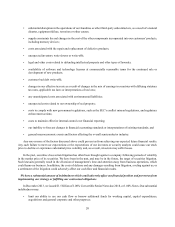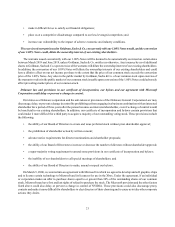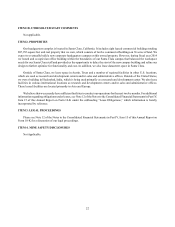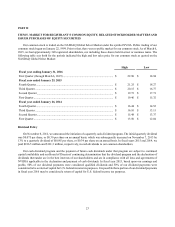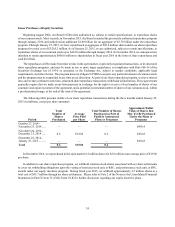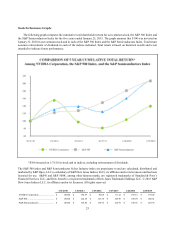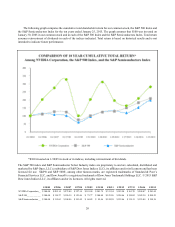NVIDIA 2015 Annual Report Download - page 96
Download and view the complete annual report
Please find page 96 of the 2015 NVIDIA annual report below. You can navigate through the pages in the report by either clicking on the pages listed below, or by using the keyword search tool below to find specific information within the annual report.16
customer base as we expand into new markets, and will likely continue to fluctuate in the future. Our operating results in
the foreseeable future will continue to depend on sales to a relatively small number of customers, as well as the ability of
these customers to sell products that incorporate our GPUs and Tegra processors. In the future, these customers may decide
not to purchase our products at all, purchase fewer products than they did in the past, or alter their purchasing patterns in
some other way, particularly because:
• substantially all of our sales are made on a purchase order basis, which permits our customers to cancel, change
or delay product purchase commitments with little or no notice to us and without penalty;
• our customers may develop their own solutions;
• our customers may purchase products from our competitors; or
• our customers may discontinue sales or lose market share in the markets for which they purchase our products.
The loss of any of our large customers or a significant reduction in purchases by them would likely harm our financial
condition and results of operations and any difficulties in collecting accounts receivable could harm our operating results
and financial condition.
We maintain an allowance for doubtful accounts for estimated losses resulting from the inability of certain of our
customers to make required payments and obtain credit insurance over the purchasing credit extended to these customers.
In the future, we may have to record additional provisions or write-offs and/or defer revenue on certain sales transactions
which could negatively impact our financial results and we may not be able to acquire credit insurance on the credit we
extend to these customers or in amounts that we deem sufficient.
Our gross margin depends on a number of factors and changes in any of these factors could adversely affect our gross
margin.
Our gross margin for any period depends on a number of factors, including the mix of our products sold, average selling
prices, introduction of new products, product transitions, sales discounts, pricing actions by our competitors, the cost of
product components and the yield of wafers produced by the foundries that manufacture our products. We are focused on
improving our gross margin and if we are not able to control or estimate the impact of the above factors or other factors we
do not foresee, our gross margins may be negatively impacted. In addition, gross margins for our Tegra processors are lower
than our overall corporate gross margins. If Tegra processors comprise a higher percentage of our future revenue, or if we
continue to enter into new business areas with comparatively lower margins, our overall gross margins may decline.
If we fail to estimate customer demand properly our financial results could be harmed.
We manufacture our GPUs and Tegra processors based on estimates of customer demand. In order to have shorter
shipment lead times and quicker delivery schedules for our customers, we may build inventories for anticipated periods of
growth which do not occur, or may build inventory anticipating demand for a customer’s product that does not materialize.
In estimating demand, we make multiple assumptions any of which may prove to be incorrect. Situations that may result
in excess or obsolete inventory include:
• changes in business and economic conditions, including downturns in our target markets and/or overall economy;
• changes in consumer confidence caused by changes in market conditions, including changes in the credit market;
• a sudden and significant decrease in demand for our products;
• a higher incidence of inventory obsolescence because of rapidly changing technology or customer requirements;


